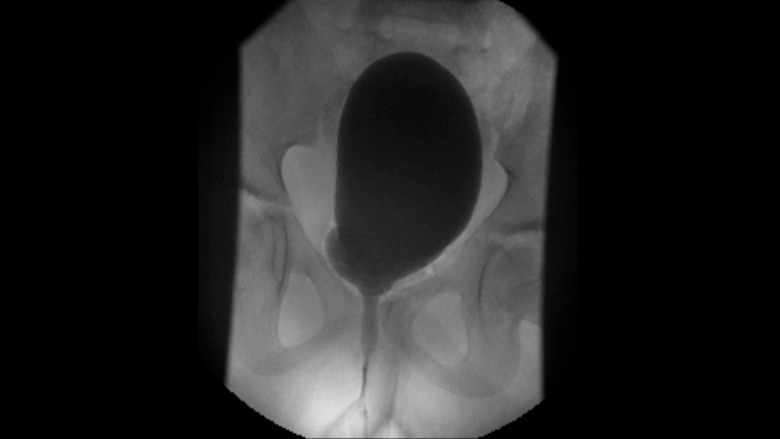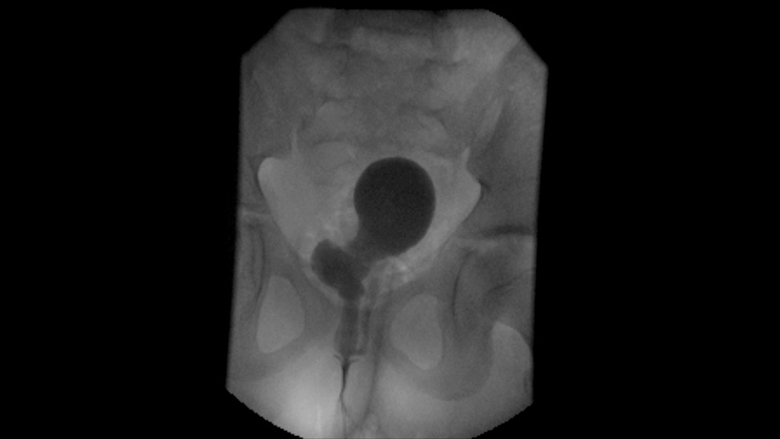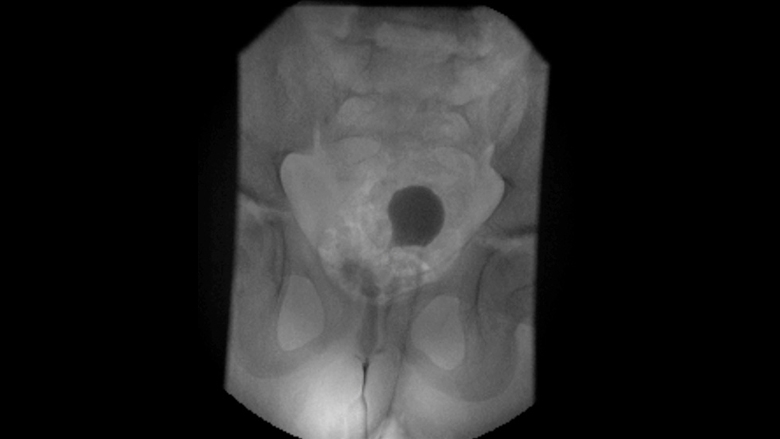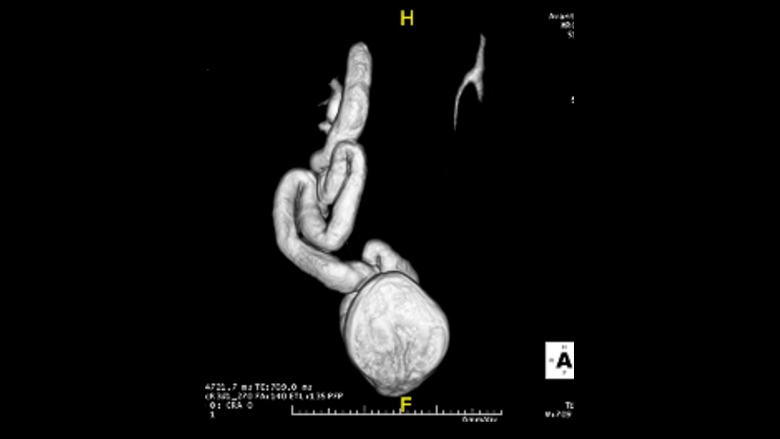Duplex Kidney With Ureteral Obstruction Case Study
Presenting concern
A 9-year-old female was awakened early one morning with right-sided abdominal pain. The pain was severe, and the child was taken to a local emergency department (ED). In the ED, she had a CT scan that was suspicious for early acute appendicitis; it also revealed a completely duplicated kidney with what appeared to be a chronically obstructed right upper pole moiety.
The ED team was concerned about other sources of abdominal pain. The girl underwent exploration and appendectomy. At the time of intraoperative exploration, her surgeon noted that there was little inflammation of the appendix. After the procedure, the girl continued to complain of pain. Her urologist ordered a voiding cystourethrogram (VCUG), which showed an abnormal impression on the right side of the base of the bladder.
The child was then scheduled for an open duplex ureteral reimplantation. Seeking a second opinion, the family contacted CHOP. The child and her family lived in the southeastern United States, and we were able to facilitate the family’s experience by planning both the intake visit and surgery upon arrival to Philadelphia.
Evaluation
During our office visit, we noted that the child not only had intermittent pain, but dampness, and an MRI urogram was ordered. This study confirmed a massively dilated ectopic ureter associated with a functioning right upper pole. The upper pole, however, was small and dysplastic.
This 9-year-old’s pain that prompted the surgery for appendicitis may have been from her obstructed right upper ectopic ureter. The ureter was also likely causing her daytime dampness. Her parents brought her voiding cystourethrogram (VCUG) (figure 1 above) with them for the visit. With the findings on the magnetic resonance urogram (MRU), together with those from the VCUG, we can pinpoint the position of the ureteral orifice as being on or at the sphincter complex.
Treatment
The surgeon has a number of therapeutic opportunities to choose from in a child with a duplex kidney with upper pole ureteral obstruction. In most cases, the function of the upper pole is minimal, as was the case here. Options include an upper pole heminephrectomy with distal ureterectomy, through either an open or laparoscopic approach, an upper-to-lower ureteropyelostomy with removal of the distal ureteral stump at the level of the kidney or lower, at the level of the iliac vessels. Another option would be an open or laparoscopic double-barreled ureteral reimplant.
Although all of these options are viable, we elected to proceed to a robotic-assisted laparoscopic upper-to-lower pole ureteroureterostomy with removal of the distal ureteral stump. Gran et al1 have shown that leaving upper pole systems intact despite relatively poor function is an alternative that may minimize surgery and poses no long-term problem in most cases. Lashley et al2 have shown us that we can take a dilated upper pole system, anastomose it to a non-dilated lower pole system at the level of the ileac vessels with decompression and good long-term results. The benefit of doing this laparoscopically with robotic assistance allows a reconstruction in situ with excellent visualization and the ability to suture with fine instruments. Our patient was seen post-operatively in her hometown two months after leaving CHOP. Her ultrasound looked vastly improved and she is awaiting a functional study to assure good drainage from both systems.
References
- Gran CD, Kropp BP, Cheng EY, Kropp KA. Primary lower urinary tract reconstruction for nonfunctioning renal moieties associated with obstructing ureteroceles. J Urol 2005 Jan;173(1):198-201.
- Lashley DB, McAleer IM, Kaplan GW. Ipsilateral ureteroureterostomy for the treatment of vesicoureteral reflux or obstruction associated with complete ureteral duplication. J Urol 2001 Feb;165(2):552-4.





